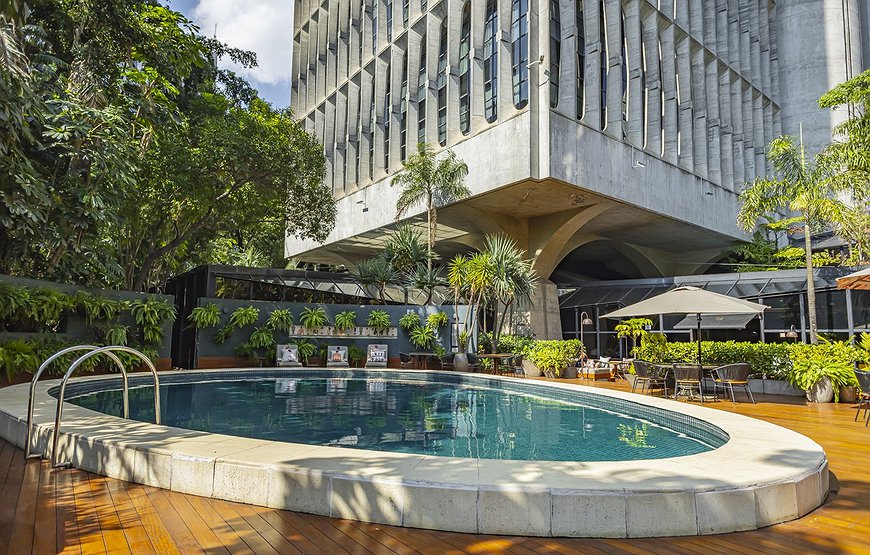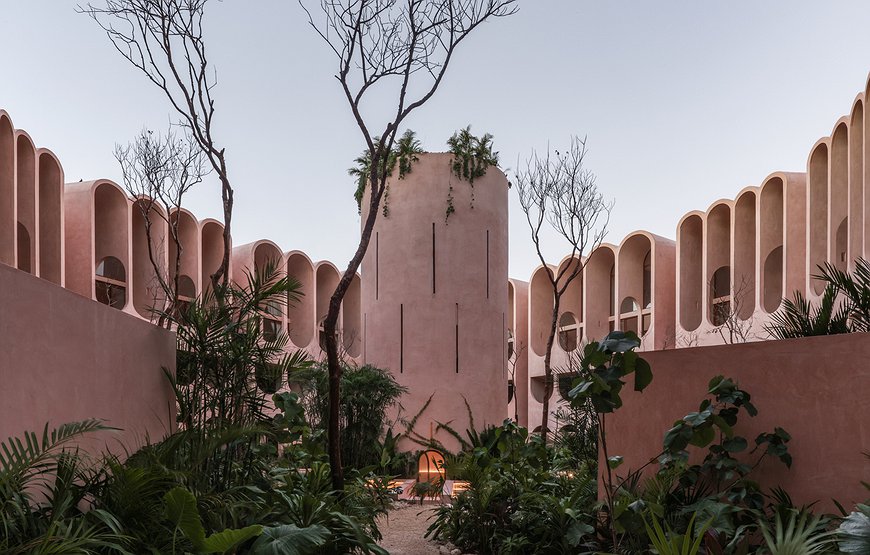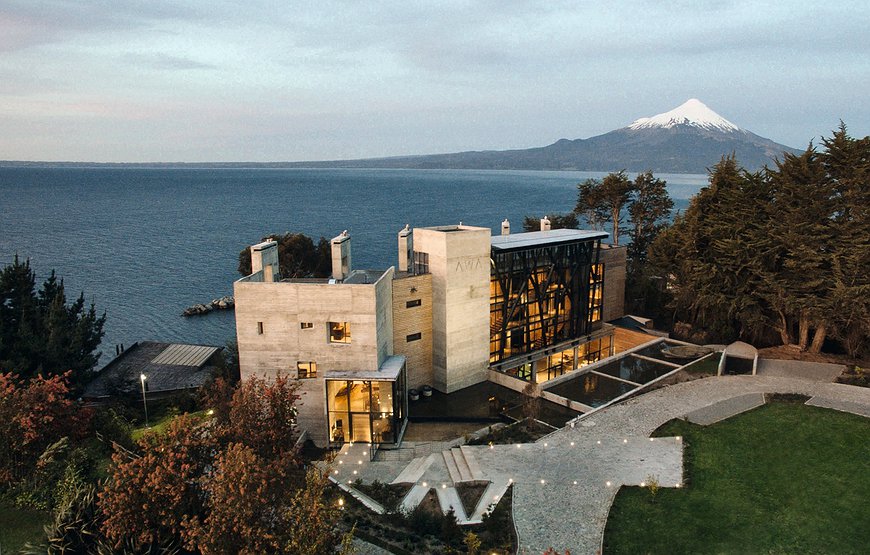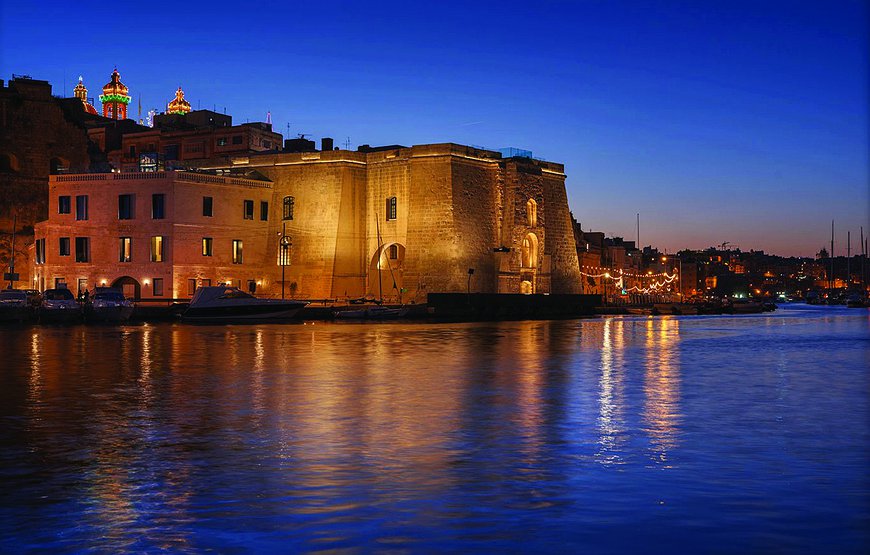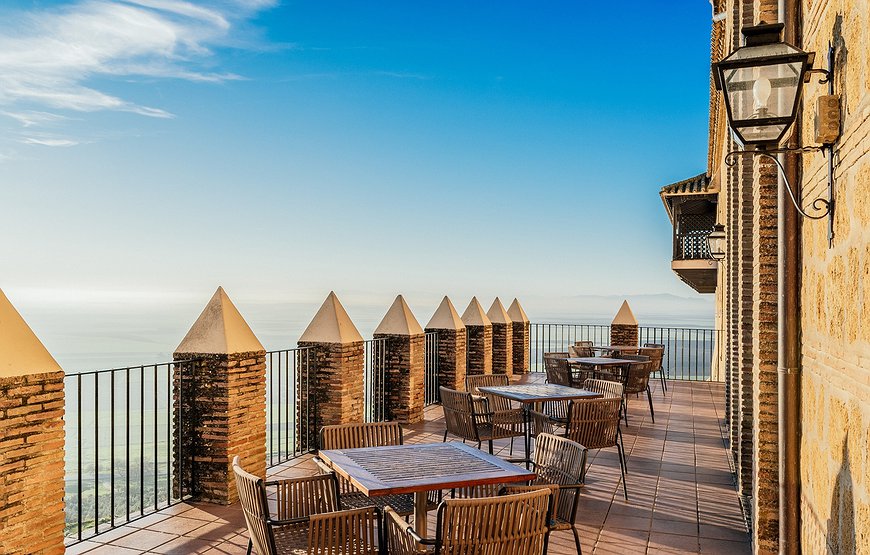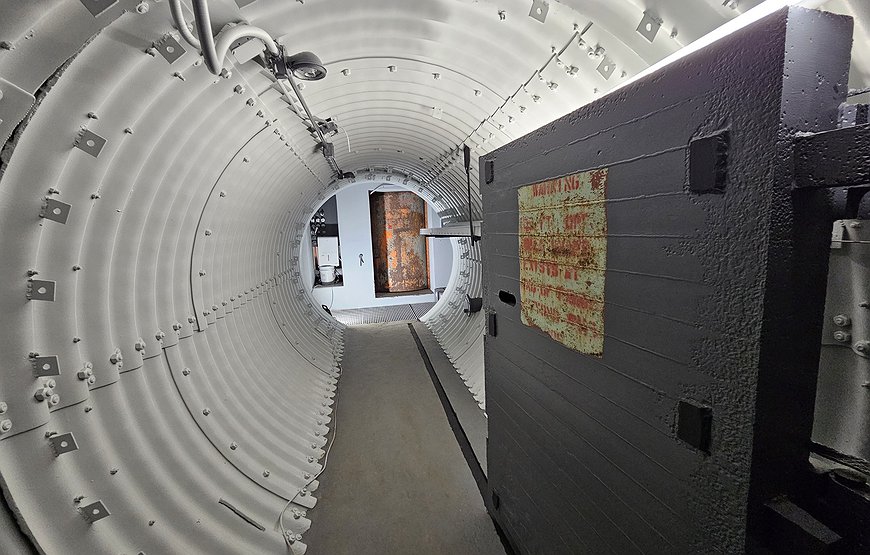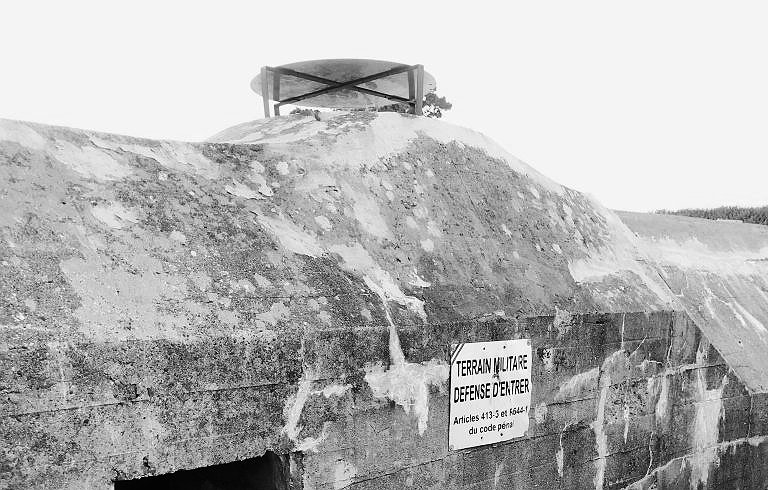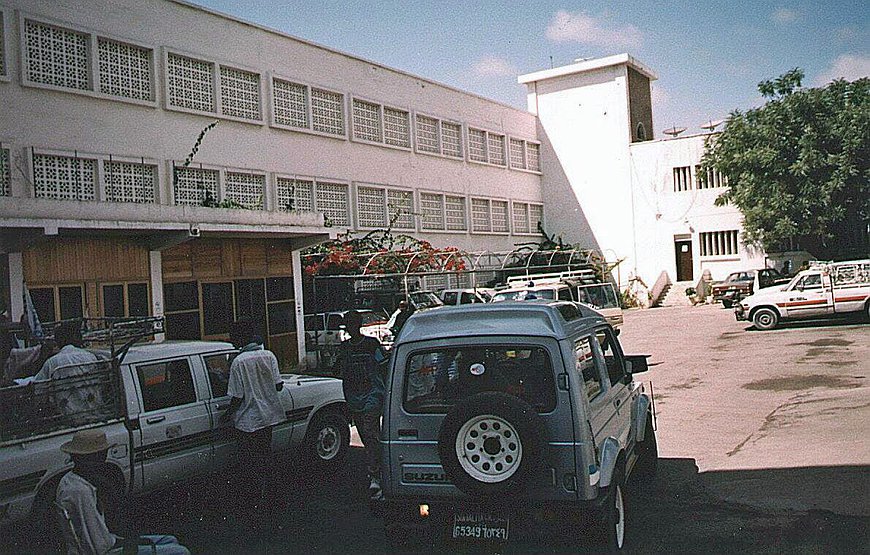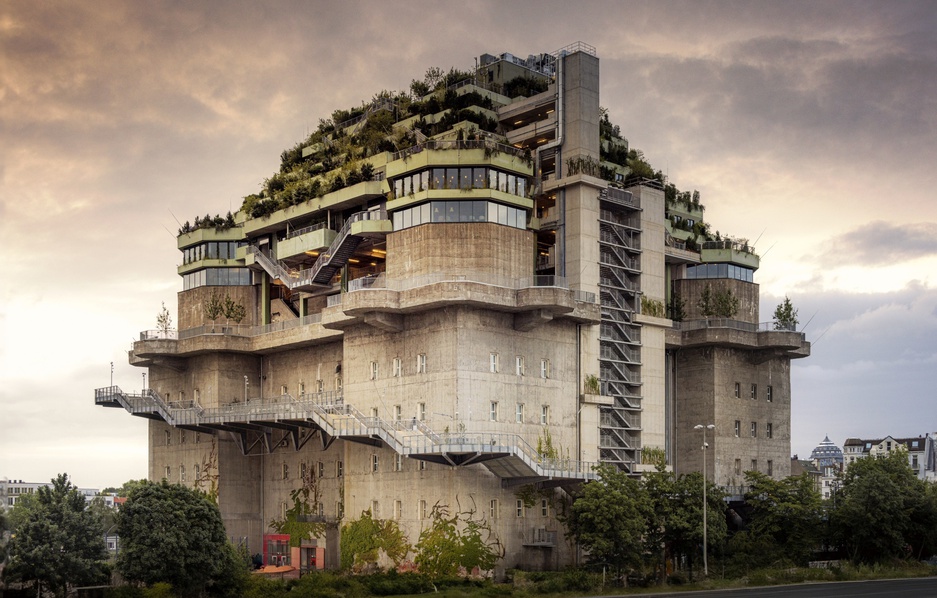
Reverb by Hard Rock Hamburg, aka the "Green Bunker," is one of the most unusual hotels in the world. It was built on top of a former WW2 fortress, and after a lengthy reconstruction, which started in 2019, the bunker hotel opened in July 2024. It has 134 rooms, four restaurants, a cocktail bar, a concert hall, a fashion shop, and Hamburg's largest public roof garden.
Hamburg's eyesore, a 38-meter-tall forgotten and rotting brutalist structure in the St. Pauli quarter, was transformed into a trendy four-star hotel.
The "Flakturm IV—Heiligengeistfeld," with its 3.5-meter-thick walls, was too hard to destroy. So, eventually, instead of erasing part of Hamburg's not-so-glamorous past, an ingenious concept saved it for future generations.
Renovating the historical structure and adding an extra five floors cost €100 million for the investors, but it was worth every euro cent because the "forest in the sky" became an instant hit among locals and tourists from day one.
Hamburg Bunker - A World War II Landmark
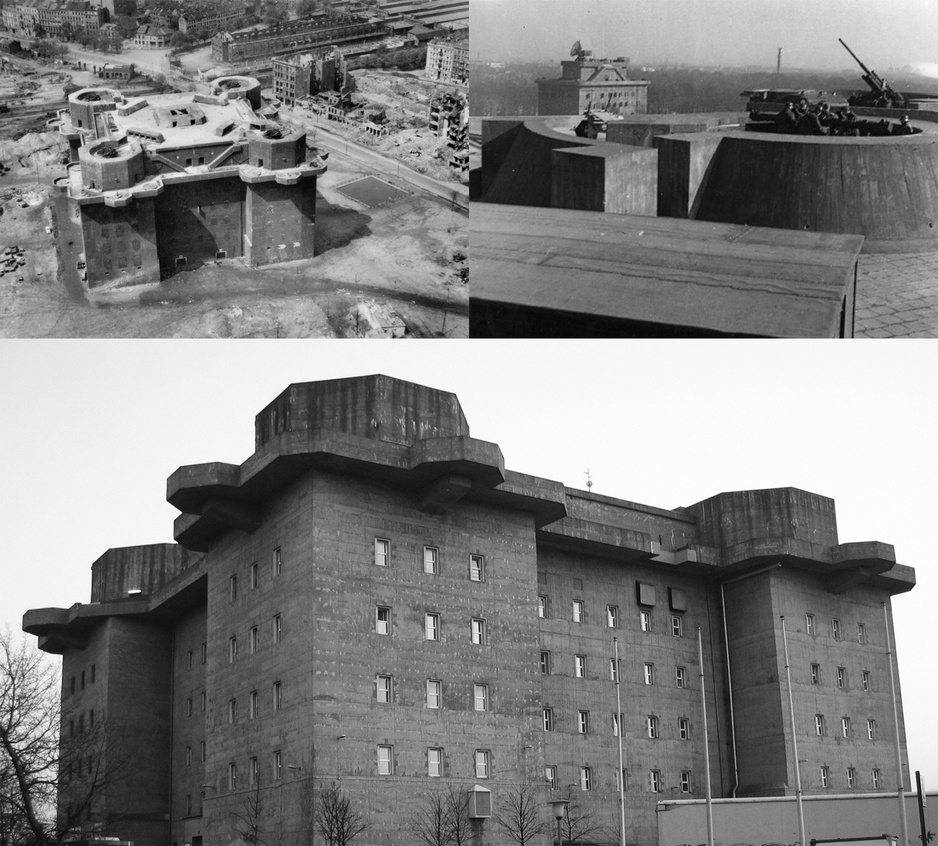
During the Second World War, eight large concrete bunkers called Flakturme were built in the most important cities of the Third Reich: Berlin, Hamburg, and Vienna.
These bunkers mounted the heaviest anti-aircraft guns on top of the structures to shoot down American Flying Fortresses and British Lancasters. They turned out to be extremely effective and indestructible.
Ultimately, eight bunkers were built: three in Berlin, three in Vienna, and two in Hamburg. Four towers were constructed in the Hamburg districts of St. Pauli and Wilhelmsburg between 1942 and 1944. Two were designed as high-rise bunkers with mounted anti-aircraft guns, and the others were smaller control centers.
The massive towers looked more robust than their military capabilities. However, they were very successful as shelters for the population and in terms of propaganda. They were designed as almost indestructible fortresses, or so the people thought of it.
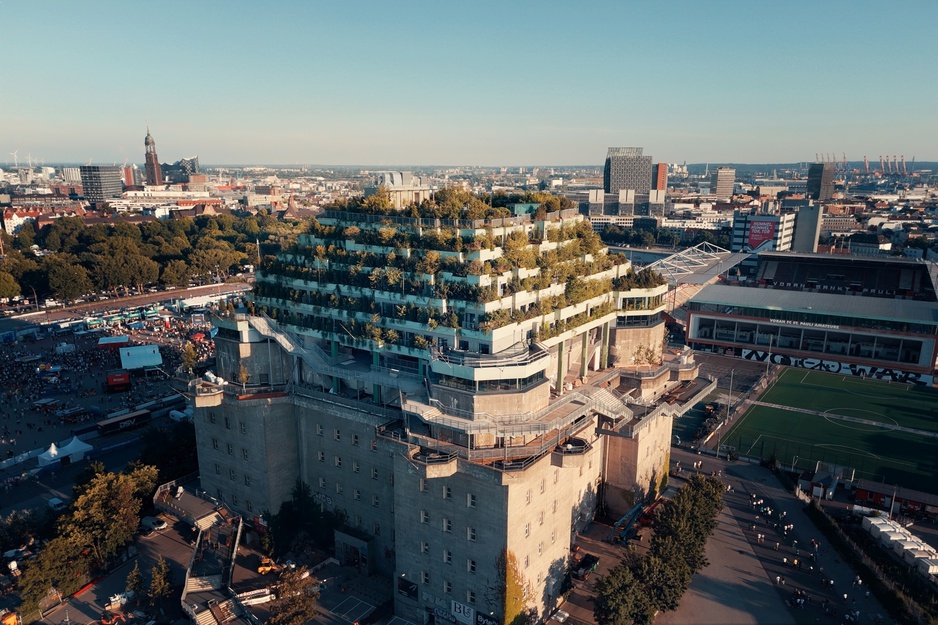
Photo by HMG
The Hamburg Flak Towers have survived to this day. Only the smaller guide towers were blown up and dismantled. Until the opening of Reverb by Hard Rock Hotel Hamburg, the towers were mainly used as music clubs and for social and cultural events.
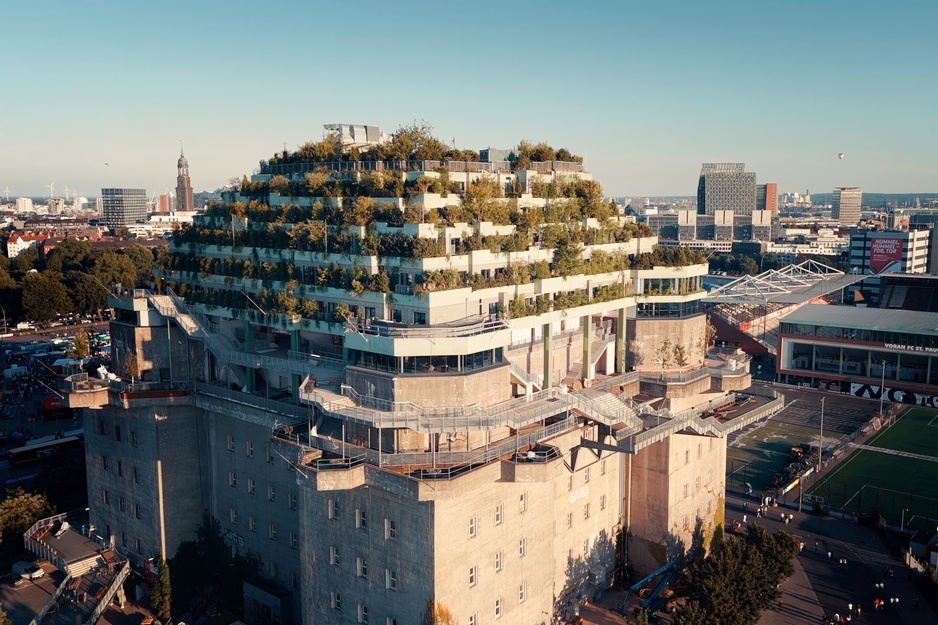
Photo by HMG
The Brutalist-style construction brings tower defense games to life. Prepare your water guns to fend off anything approaching the Bunker's high walls!

Photo by HMG
The bunker has been expanded with a pyramid-shaped structure on top, with pathways around the outer walls and a rooftop terrace, creating a 1,400-square-meter urban garden open to the public.
There are over 10,000 square meters of green and communal areas with approximately 23,000 plants, including 4,700 trees - mountain pines and columnar junipers. Now, that's a forest in the sky!
A memorial and information center has also been established to provide information about the history of the bunker, including the story of how it was constructed by forced laborers in 1942.
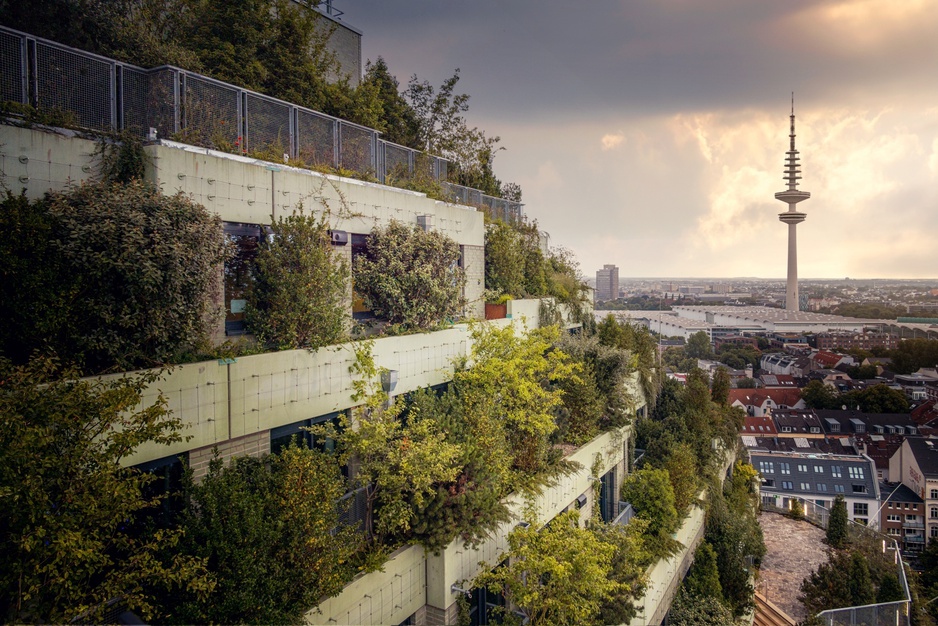
Photo by HMG
The green roof and facade of the World War II building are intended to act as a natural air conditioning system for this part of Hamburg.
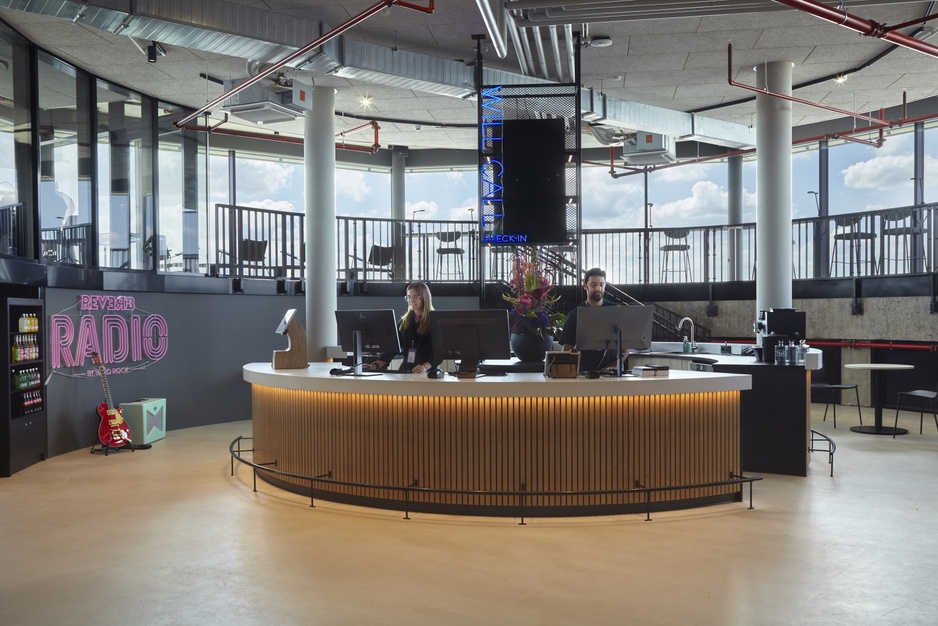
"Will Call" - Reverb by Hard Rock's Reception - Photo by Maren Schabhuser
The hotel's reception is high up on top of the bunker's original structure. It's called the "Will Call," where you can check the panoramic views of Hamburg after receiving the keys to your room.
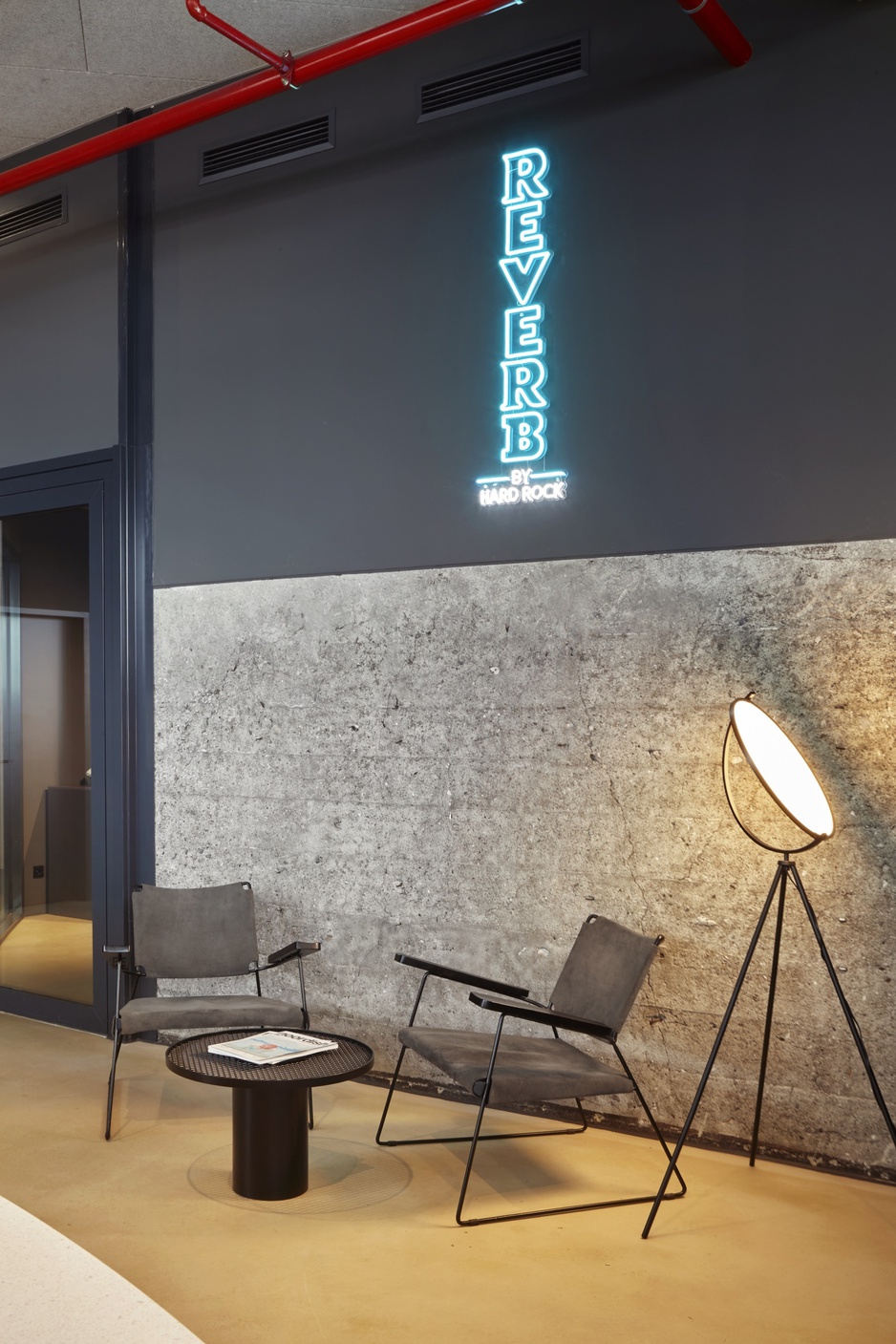
Photo by Maren Schabhuser
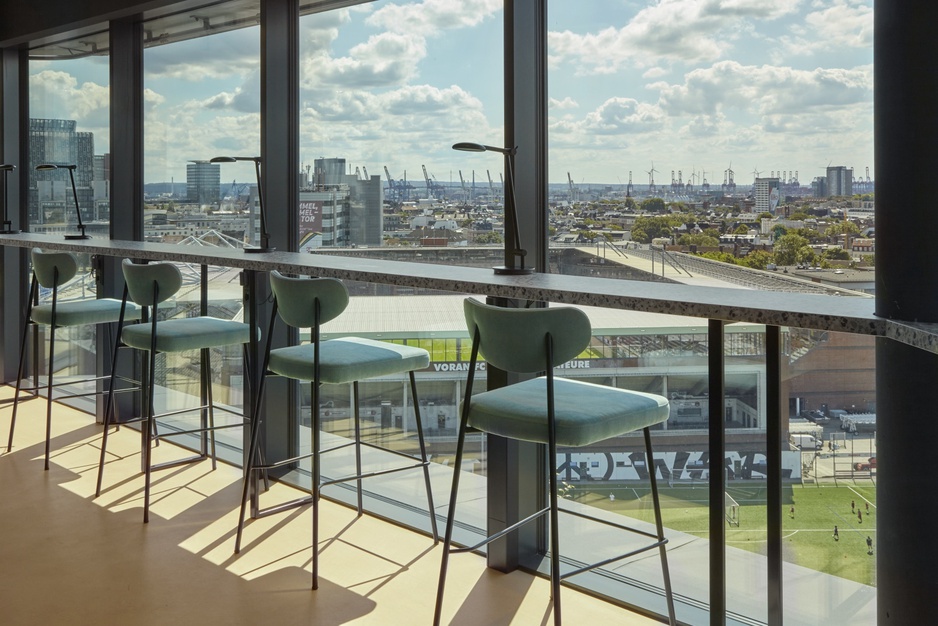
Panoramic view of Hamburg's industrial/sports quarter - Photo by Maren Schabhuser
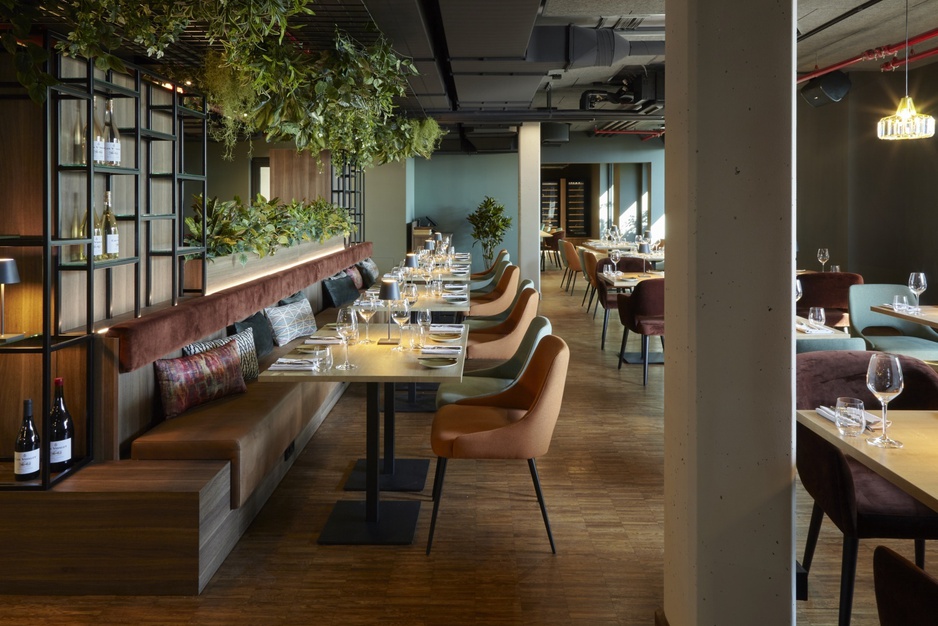
La Sala Restaurant - Photo by Maren Schabhuser
The new, expanded part of the bunker includes the "La Sala" restaurant, the "Karo & Paul" bar-restaurant, and the "Constant Grind" café.
La Sala is a Spanish fusion restaurant with 14 professional chefs working in an open-concept kitchen, serving food all day - breakfast, brunch, lunch, and dinner. It's the hotel's largest restaurant, and it's where the breakfast room is.
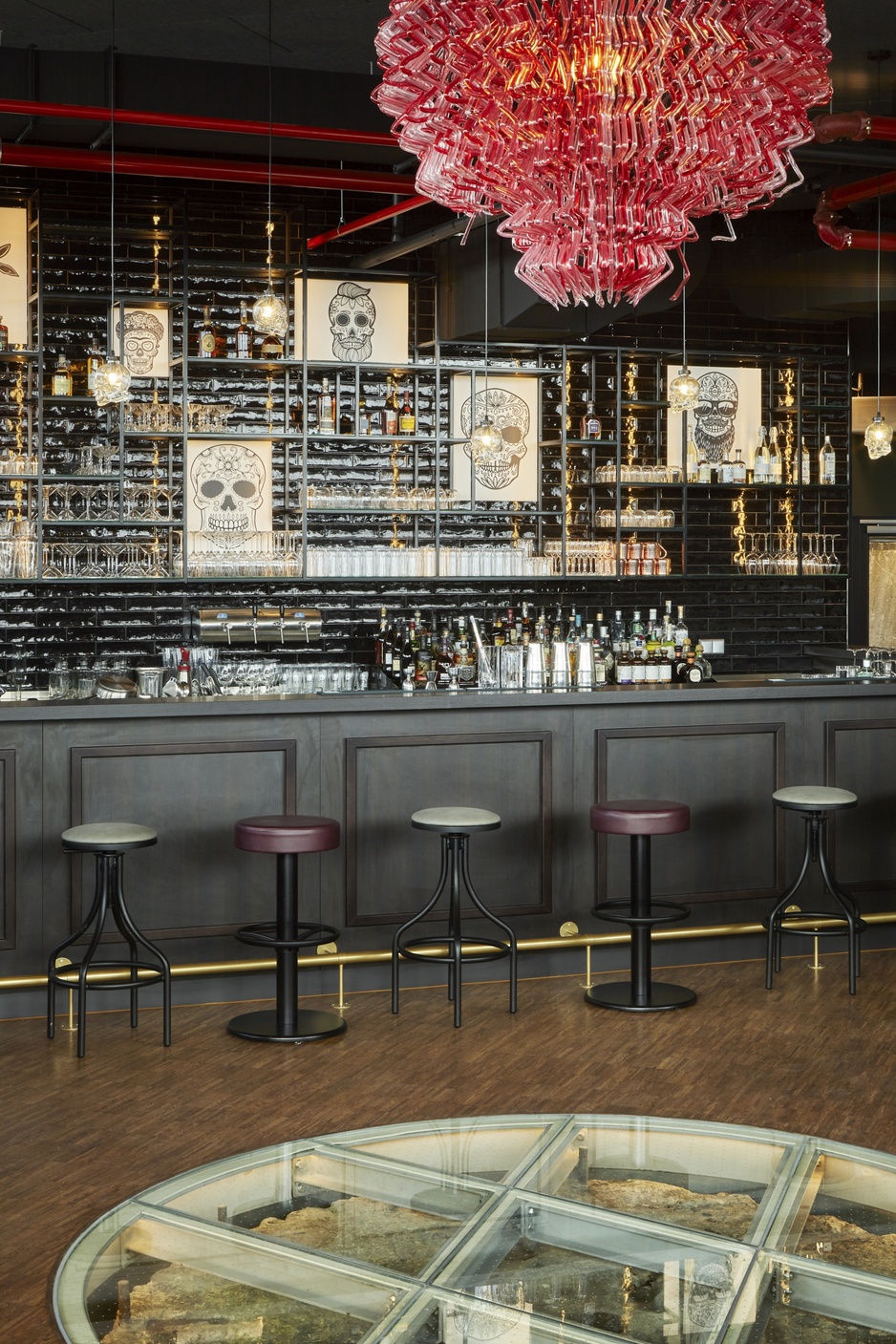
Karo Paul Bar - Photo by Maren Schabhuser
Karo & Paul by Frank Rosin is a trendy bar spread across three levels, named after the Hamburg neighborhoods Karoviertel and St. Pauli.
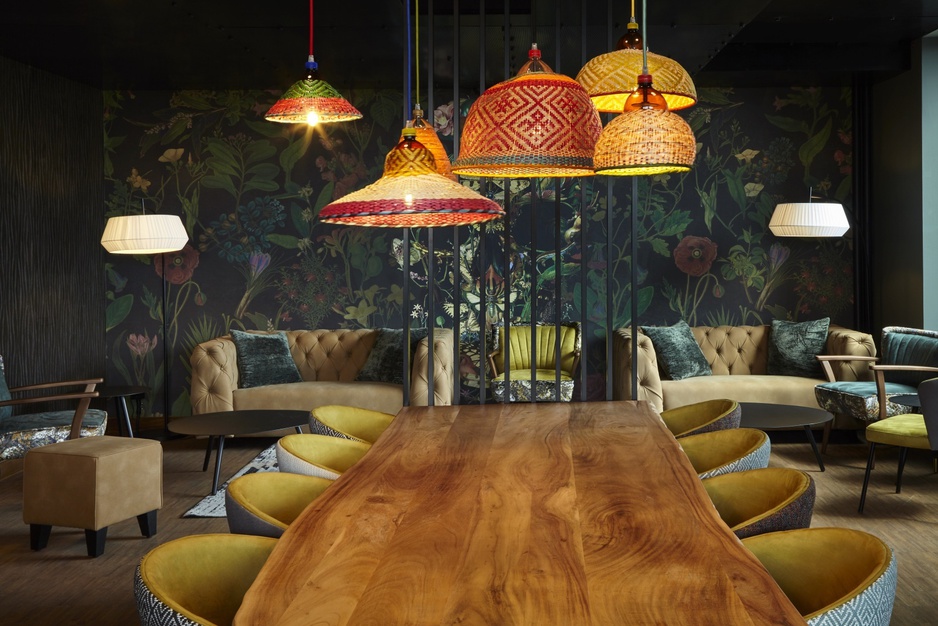
Karo Paul private dining - Photo by Maren Schabhuser
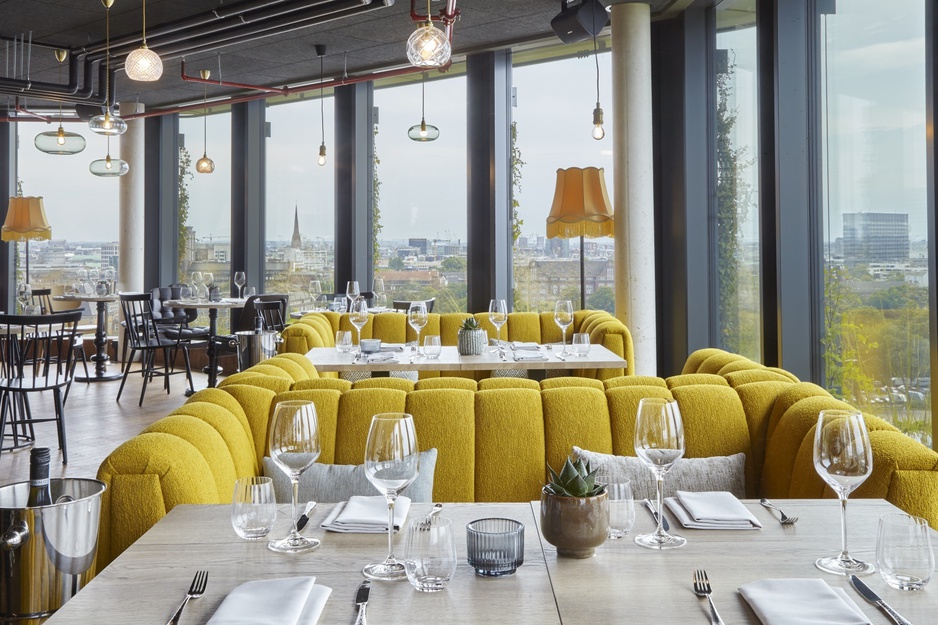
Photo by Maren Schabhuser
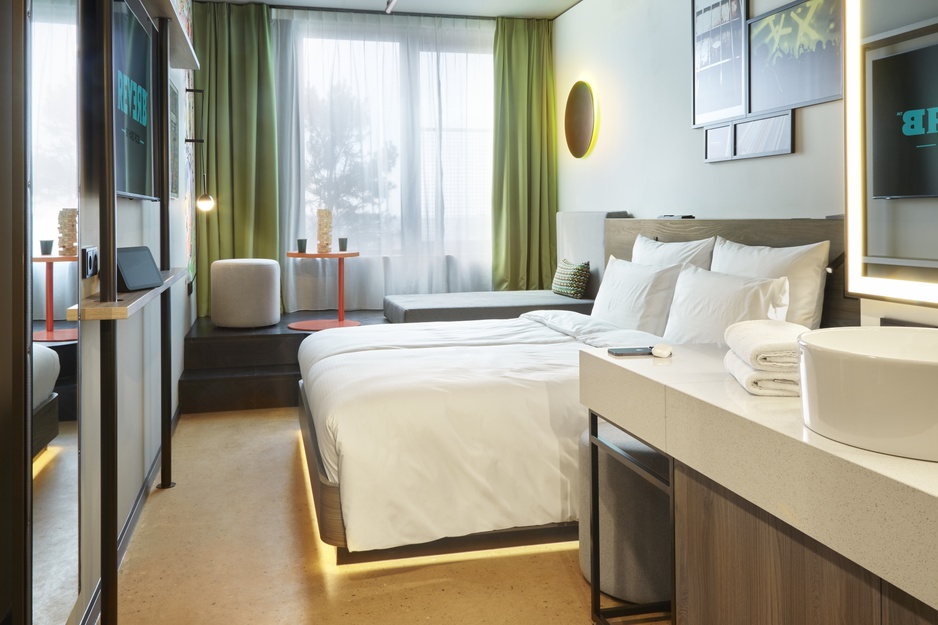
Classic King Room - Photo by RIMC
The hotel has 134 rooms on four floors, 12 of which are suites measuring 30 to 50 square meters, while the classic rooms are between 17 and 25 square meters.
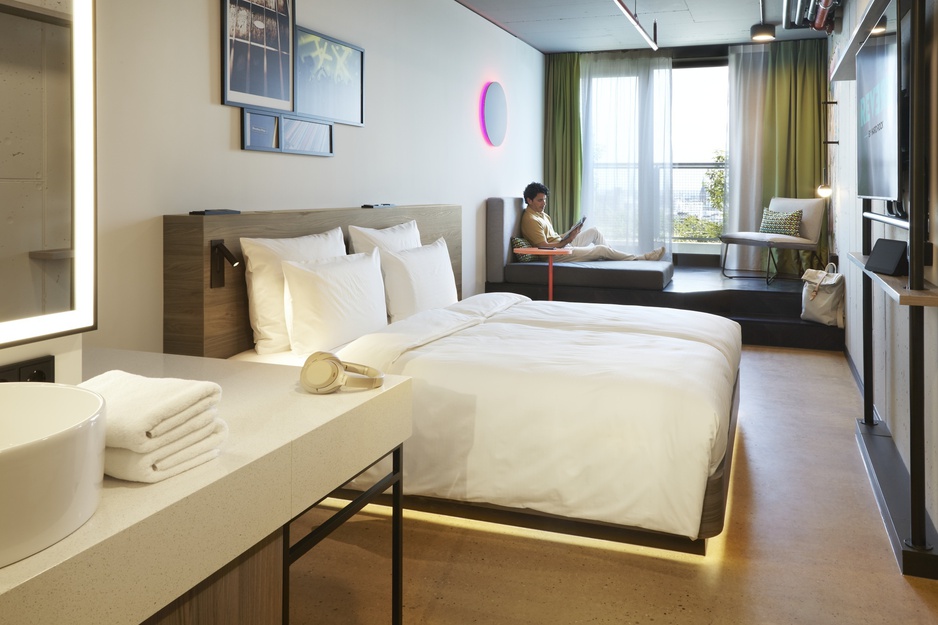
Superior King Room - Photo by RIMC
The Superior Rooms with "Harbour View" overlook the Millerntor-Stadion, home of the FC St. Pauli football club.
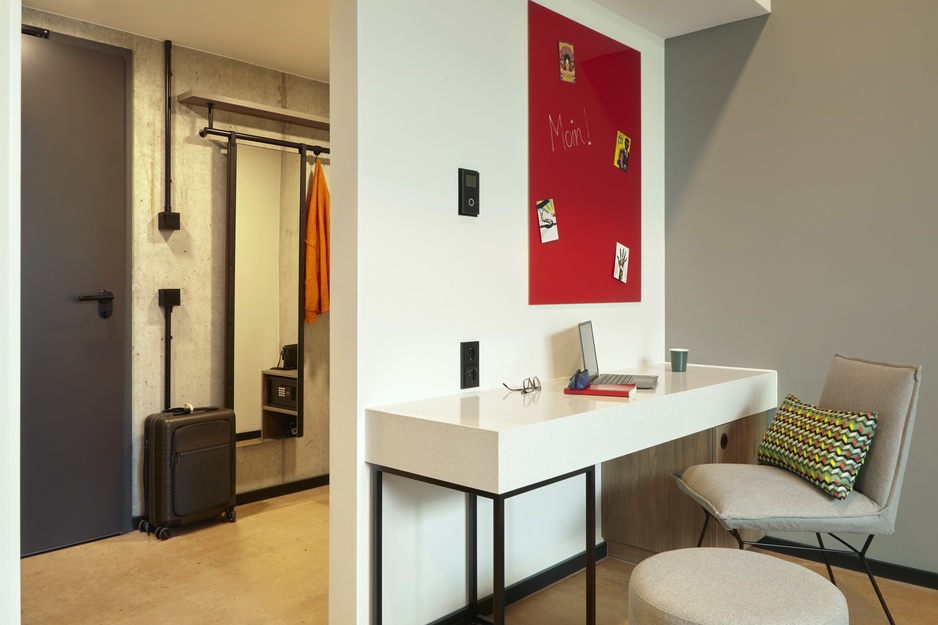
Replay Suite King - Photo by RIMC
There is a mix of king, double queen, and roadie (family) bunk rooms, all with stylish, comfortable furnishings, fan-inspired artwork, work areas, and bathrooms with premium toiletries. The roadie bunk room has two bunk beds and a queen bed, two private bathrooms, a karaoke machine, and oversized smart TVs.
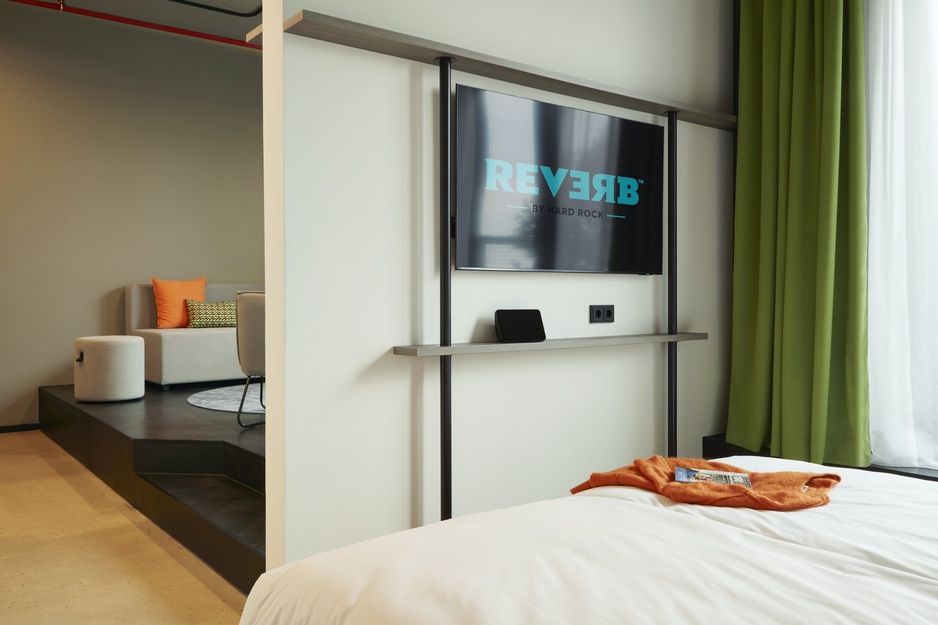
Photo by RIMC
The rooms are equipped with an intelligent voice assistant, so you can use it to access the Reverb City Guide, adjust the lighting mood, select playlists and entertainment programs, or order fresh towels.
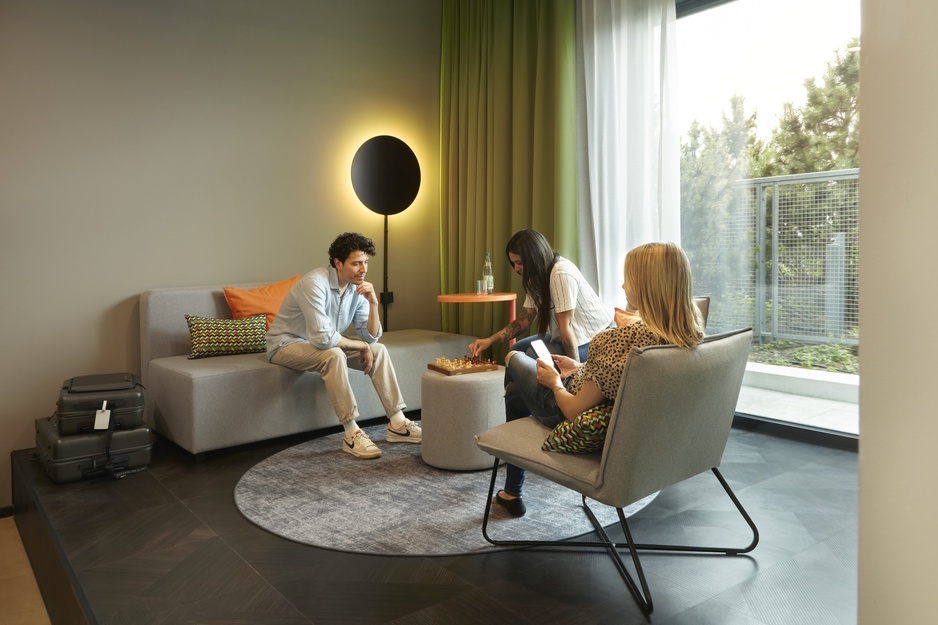
Photo by RIMC
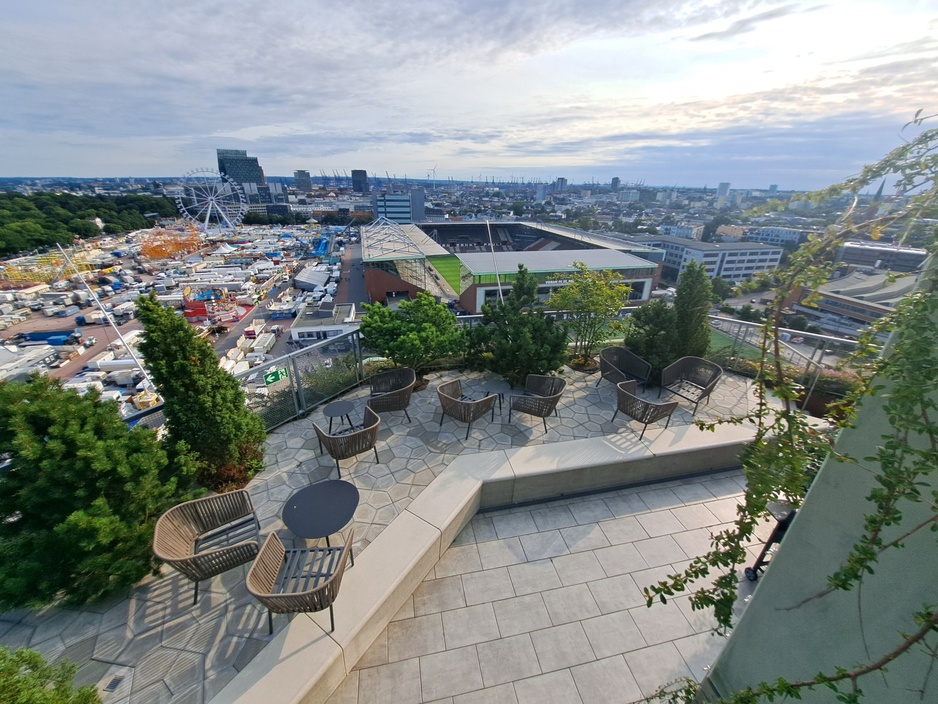
Rooftop terrace
The rooftop garden is open to the public from 9 AM to 9 PM in the warmer months. A 560-meter-long metal pathway leads to the unique rooftop garden sitting atop the Nazi fortress.
The terrace has a spectacular 360-degree view of Hamburg from a height of 58 meters.
Feldstraße 66, 20359 Hamburg, Germany

